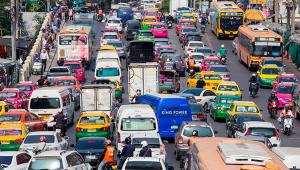india_Istock.jpg

Rural road in India
While road deaths are estimated to have levelled off since 2007 they remain high at 1.25 million every year, with 50 million injuries. The Sustainable Development Goals aim to reduce road deaths by half by 2030.
Bertrand Badré, the World Bank’s managing director and CFO, said to do this both the public and private sectors will need to step up their efforts.“We must shift from stabilising to dramatically reducing road deaths. This will require more commitment, scaled-up action and dedicated funding.”
The number of traffic-related deaths is already higher than those from malaria or tuberculosis, and if trends continue traffic-related deaths could surpass those from HIV-AIDS in the next five years. They are already the leading killer among 15-29 year olds.
Low- and middle-income countries could lose between 3-5% of gross domestic product due to road-related deaths and injuries, but they are more common in low-income countries. Africa remains the region with the highest death rates as of 2013, at 52% above the global average.
Pierre Guislain, senior director for the World Bank’s transport & ICT global practice, said the “international community needs to focus on the plight of low-income countries” who have 16% of total deaths from road incidents globally but just 1% of the world’s cars.
The World Bank established a Global Road Safety Facility (GRSF) in 2016, which promotes knowledge sharing and multi-sectoral interventions with support from the UK, Bloomberg Philanthropies and the FIA Foundation.
The bank has increased its lending targeted at road safety more than 300% since the GRSF was launched, from $56m to $239m this year.
GRSF funding and technical assistance has achieved significant results in South and Central America and Africa. For example, producing a 35% drop in traffic deaths on project roads in Argentina since 2011.
The World Bank said the results illustrate the need for more hands-on partnerships with committed governments, the private sector and other partners to accelerate change and save lives.













